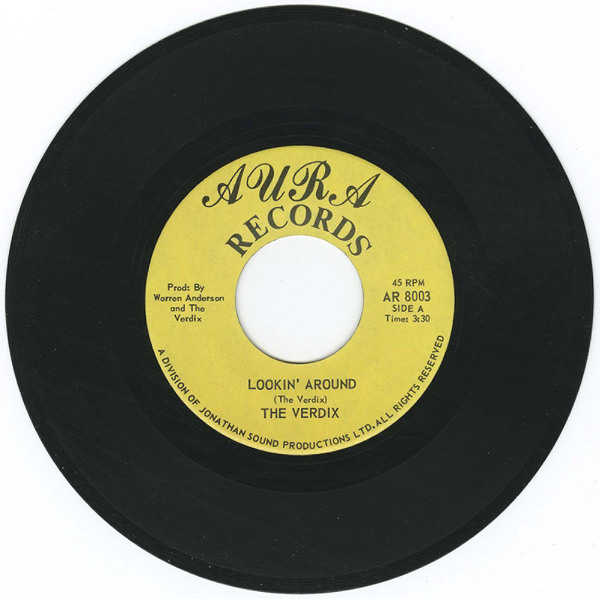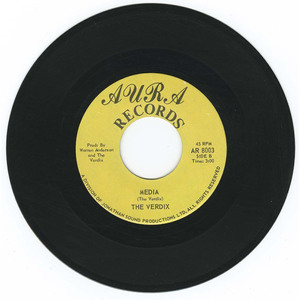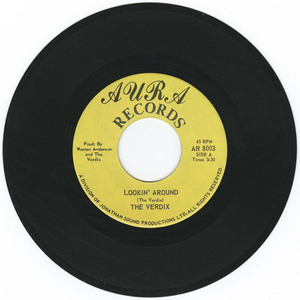Information/Write-up
It was a symbolic loss more than anything. Nothing worthwhile had happened at the hotel, besides the occasional drug deal or barroom brawl, for nearly half a decade. Depending on who you talk to, punk’s halcyon days at the Calgarian Hotel were cut short by the invasion of meathead hardcore, badly disguised narcotics officers, or one particularly brutal fight between the punk daytrippers and resident prostitutes. Whatever the reason (and it was probably some combination of all three), the hotel bar at 178 Seventh Street S.E. that had unwittingly nurtured the first wave of Calgary punk was finally lost. In December 1986, it became another burnt-out building awaiting demolition.
There isn’t a plaque on the wall or an etching in the sidewalk to remind you, but the Calgarian Hotel was the place where local bands like the Hot Nasties, Sturgeons and Verdix found their voice, and outsiders like Black Flag, Subhumans and Hüsker Dü found a degenerate audience. It established the foundation of a vital underground music community that blossomed in the summer of 1978 and continues today, a scene built by musicians who didn’t have anywhere else to go but the worst bar on the worst street in the worst part of the city. Alas, the Calgarian Hotel is now dead. Long live the Calgarian Hotel.
December 21, 1977
A lunchtime disaster featuring a group of Catholic school misfits called the Social Blemishes allows Calgary punk to finally kick off in earnest. At the centre of the chaos is Warren Kinsella, an idealistic teenager who, many years later, helps Jean Chrétien’s Liberal Party win three historic majorities. After a stumbling beginning onstage at Bishop Carroll High School, the Social Blemishes break up, leading to the formation of the Hot Nasties and the Sturgeons. With their first lunch-hour show behind them, the bands set off to find a place that will let them play a real concert.
Spring 1978
The first shows outside of the walls of Bishop Carroll are booked using suits and subterfuge. A decidedly teenage phenomenon, getting a show means renting a hall, which isn’t easy at a time when media paranoia about punk is at a fever pitch.
“We’d put on suits — and we had short hair when everyone else had long hair, so we looked like army cadets — and we’d go ask to rent the Legion hall for our label S.B. Records, which was Social Blemish Records,” Kinsella says. “They never asked, and would always rent us these halls.”
“In the early days, it was like the chess club putting on a little shindig,” laughs the Sturgeons’ Mark Igglesden. “Rather than rebellion and anarchy, it probably looked more like a Peanuts special when those kids do that little dance.” The money from shows goes towards turning S.B. Records into a real-life label, and soon, both the Hot Nasties and the Sturgeons have 7-inches. The former’s Invasion of the Tribbles marks the first official Calgarian punk release, followed by the latter’s “Forward Disorder” single.
Summer 1978
With increasing local media attention, word-of-mouth gigs regularly draw hundreds of kids. Bars that had previously ignored punk begin to take notice. The first Calgary one to offer punk a home is on the main floor of the rundown Calgarian Hotel that caters to the local King’s Crew Motorcycle Club and First Nations population. It’s a dive somehow eking out an existence on a seedy block of an otherwise upper-class town. Located downtown on Seventh Street S.E., hard-drinking punks of the Calgary Hotel have the run of the bar’s back room for whatever riotous noise they want to make, so long as they bring their own PA, and patrons at the front don’t get too freaked out by the influx of underage, short-haired military-looking goons.
“Our first show, this little guy comes up and stares at us for a song, and we just keep playing,” says Kinsella. “Finally he walks away, and our manager walks up to us and says, ‘Do you know who that was? That was the head of the King’s Crew.’ Apparently some of the bikers were pissed that we had taken over their bar. And he was deciding if we were going to live or not.”
This wasn’t an idle threat, as the club had become embroiled in a violent war over the territory with fellow Calgarian motorcycle gangs Lucifer’s Union, the Chosen Few, and the Barbarians. Trading pipe bombs throughout the decade, only the King’s Crew in the city’s southeast, and Grim Reapers MC in the northeast, would be left standing in Calgary by the ’80s. The latter patched over to the Hells Angels in 1997.
“My parents were horrified that their nice, middle-class kid was going to the Calgarian Hotel,” laughs Michael Nathanson, who played drums in So Fuck You (SFY). “You’d hear that people got stabbed there — sure enough, one of my friends was playing onstage one night when someone got stabbed in the back.” Clearly, the stabbing resulted from someone violating the bar’s strict “no knives” policy; a sign directly beside the front door demanded that all weapons and colours be left on the bar. There were a lot of knives on the bar.
1979
While age, geography (note: no one had their own car) and schooling had kept bands isolated during the early years of Calgary punk, the satanic-clubhouse atmosphere of the Calgarian’s back room brought the Nasties-Sturgeons scene crashing into the world of the Verdix, one of the best and most underappreciated bands from Calgary’s first wave of punk.
“The Verdix were different from the Calgary bands that had gone before, which tended to be pretty young, like 17-, 18-year-olds,” says Allen Baekeland, the former station manager of CJSW. “They were a little bit older and they could play. So immediately the scene sort of coalesced around them.” Their only single, “Media,” backed with “Lookin’ Around,” showcases a band that absolutely held their own against the lean aggression of the Sturgeons and the melodic skill of the Nasties, and while a palpable, friendly tension still exists between the two camps (the Verdix were “suspicious”; the Nasties were “nerdy”), all three bands co-existed and flourished at the Calgarian.
November 1980
The Subhumans, one of the most popular bands from Vancouver’s exploding punk scene, begin a week-long residency. A holdover from the bar rock era, residencies become part of the Calgarian’s strange charm for touring bands, who are given room and board during their stay. They are expected to play three-hour-long sets each night in return. The Subhumans are quickly followed by fellow Vancouverites like the Pointed Sticks and Modernettes, who spread word of the city’s thriving scene and weird hotel bar, leading to early Canadian appearances by bands like Dead Kennedys and Ron “Chavo” Reyes-era Black Flag.
“When we brought Black Flag to Calgary, a bunch of bikers came, and it was a bad night,” says Kinsella. “In those days, to have dyed hair or an earring in Calgary was a revolutionary statement. You didn’t have it. There was a little guy named Joe Cool who had a leather jacket and dyed-blond, spiked hair. But he was the fucking toughest guy on Earth. The giveaway should have been the notches he had in his ear from when people ripped out his earrings in fights. So we brought Black Flag, and all these bikers showed up. Joe Cool used to walk around with a tiny lead pipe, the size of his fist. Some biker pushed him or called him a ‘fag,’ and he smacked this guy on the side of his temple so hard that his eye popped out. I called the cops on my own show.”
June 1981
SFY, with Lonnie James filling in on drums, opens the first three nights of a residency from Minnesota greats Hüsker Dü. There’s no money to pay him, so the band offers a quarter-ounce of black hash in return for his rhythmic services. The first two nights go fine, but on the last night, over-indulgence finally takes its toll. James returns home from work to nap before the show, and wakes up 10 minutes before the end of SFY’s scheduled set.
“I got there, and they were just finishing the set with Hüsker Dü’s roadie as a drummer,” says James. “I ran in, and they all saw me and started laughing. They got me up to play the last song, and everyone had a good laugh. And I kicked over the drums.”
1982
The first wave of Calgarian punk crested. Hardcore was beginning to take over in a big way, alienating some of the more art-minded members of the early scene. The Sturgeons had broken up and reformed as the more aggressive Riot .303, while the Hot Nasties split following a near riot at the 1981 Calgary Stampede (where they were the headlining act at the novel “Punk Night” promotion). More American acts began to find their way to the city, including the Zero Boys, who recall being used as the opening act for a group of strippers who could only legally perform at the hotel if there was also live music. They were among the last punk bands booked into the Calgarian.
“A woman I know picked a fight with one of the hookers outside,” says Lori Hahnel, who played in pioneering all-girl punks the Virgins and wrote a fictionalized account of her experiences in the city’s early punk scene, Love Minus Zero. “The fight came into the bar. It was this huge melee; it was unbelievable. It was like a movie or something. So they stopped booking the punk acts after that.”
Micheal Nathanson cites the ongoing presence of “narcotics officers in obvious trench coats” as another motivation for people to move on. Whatever the reason, punk was no longer welcome at the Calgarian Hotel. But as the ecstatic tales of stabbings, concerts and legendary Hüsker Dü drug binges attest, it had found its voice, its legs and its personality somewhere in the back room of the worst bar in the city.
-Sam Sutherland
Produced by Warren Anderson and The Verdix



No Comments